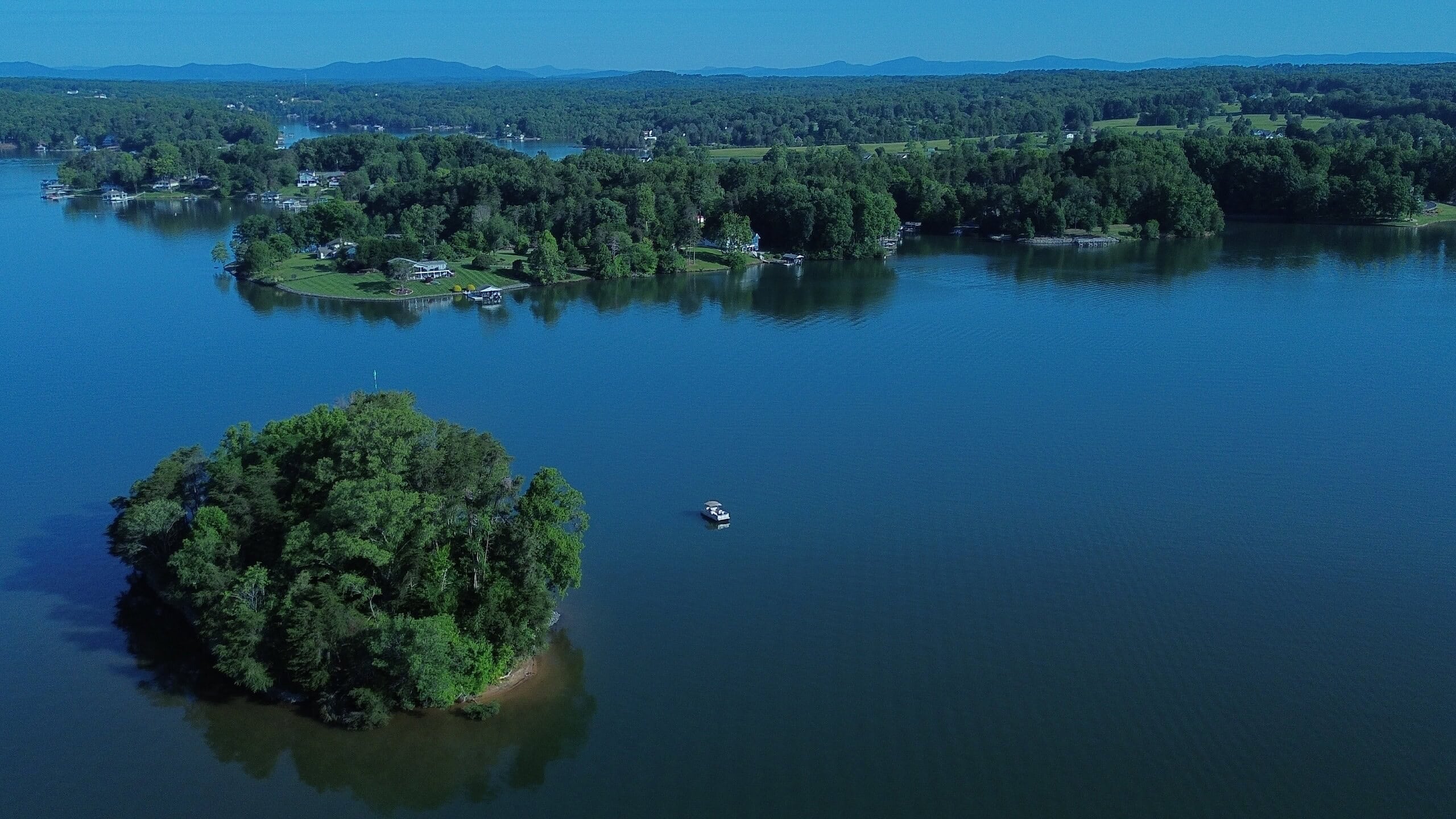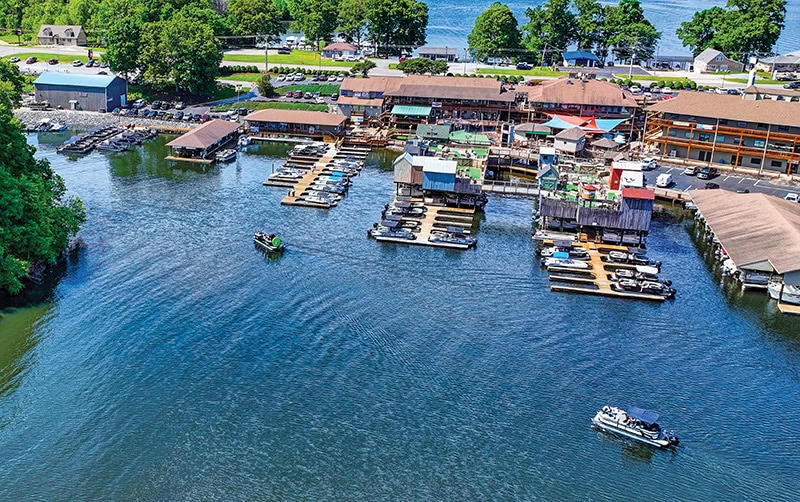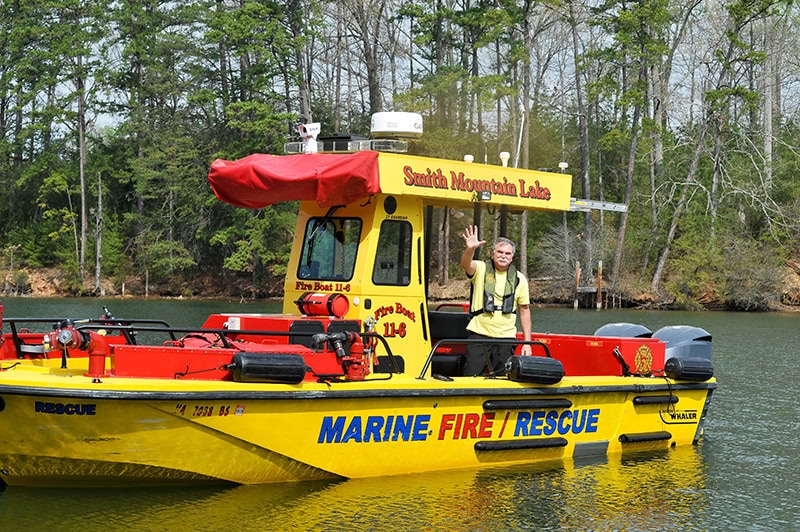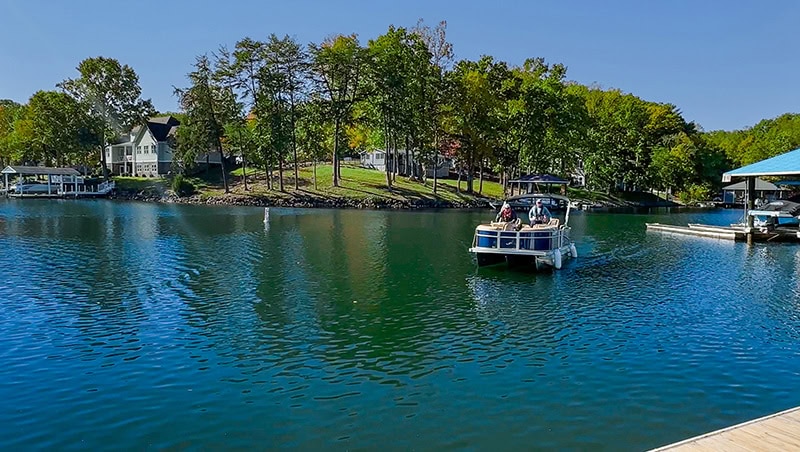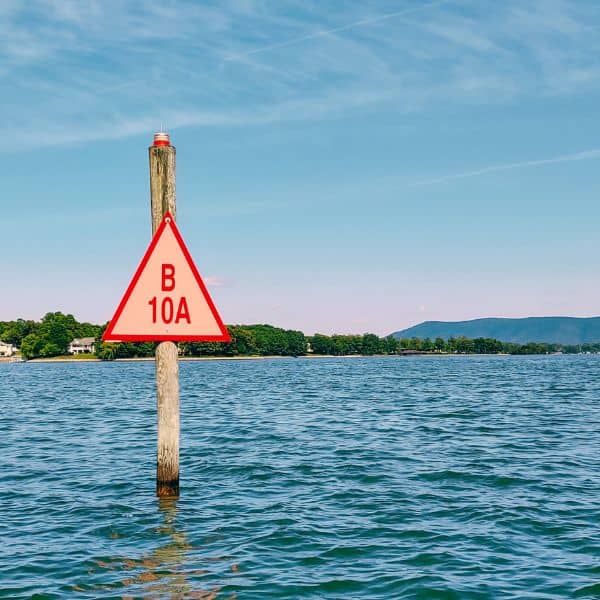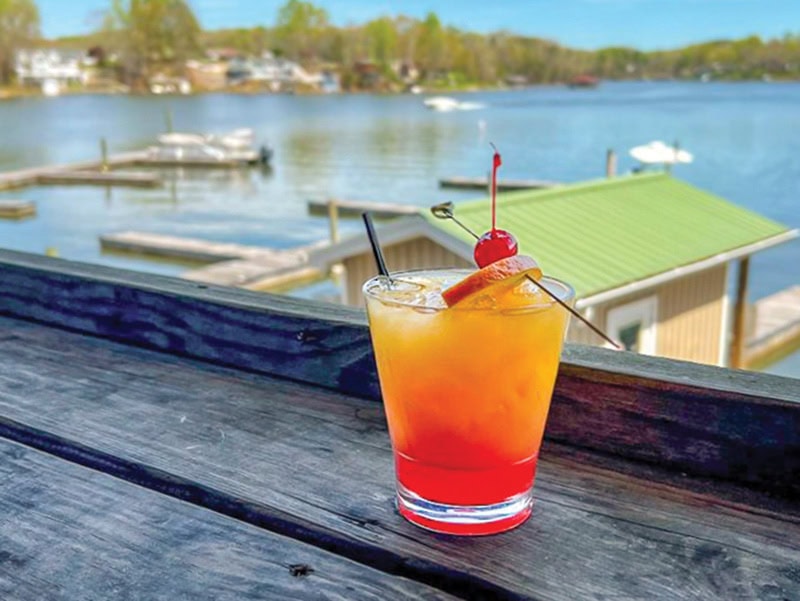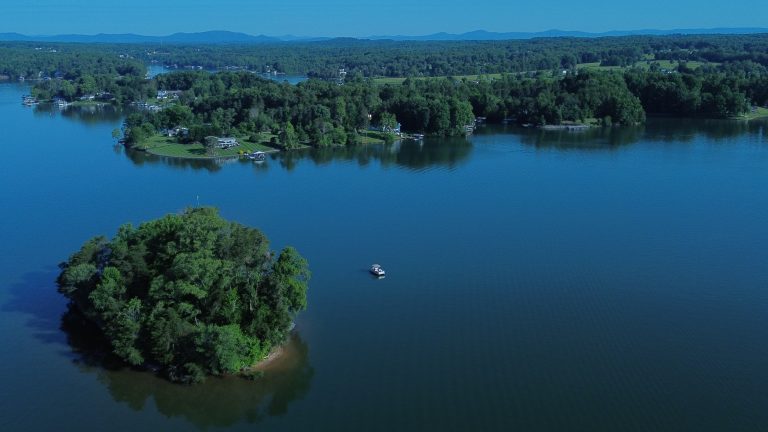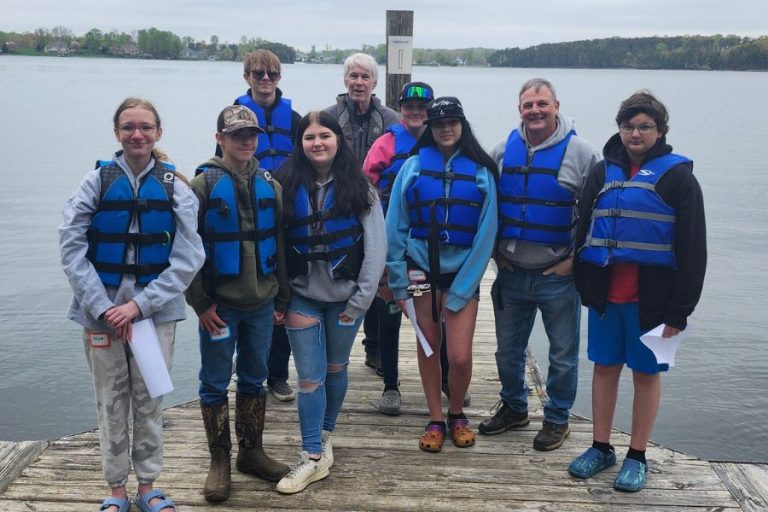How to Use Smith Mountain Lake Channel Markers
This page may contain affiliate links. If you click and purchase, we may earn a small commission at no extra cost to you. Read our full disclosure policy.
Navigating Smith Mountain Lake isn’t just about operating the boat—it’s about understanding the lake’s comprehensive channel marker system.
This thoughtfully designed network guides boaters along the Roanoke and Blackwater River channels and through major creeks like Craddock, Witcher, Walton, Gills, Bull Run, Little Bull Run, Lynville and Beaverdam, ensuring safe and confident exploration across SML’s scenic waters.
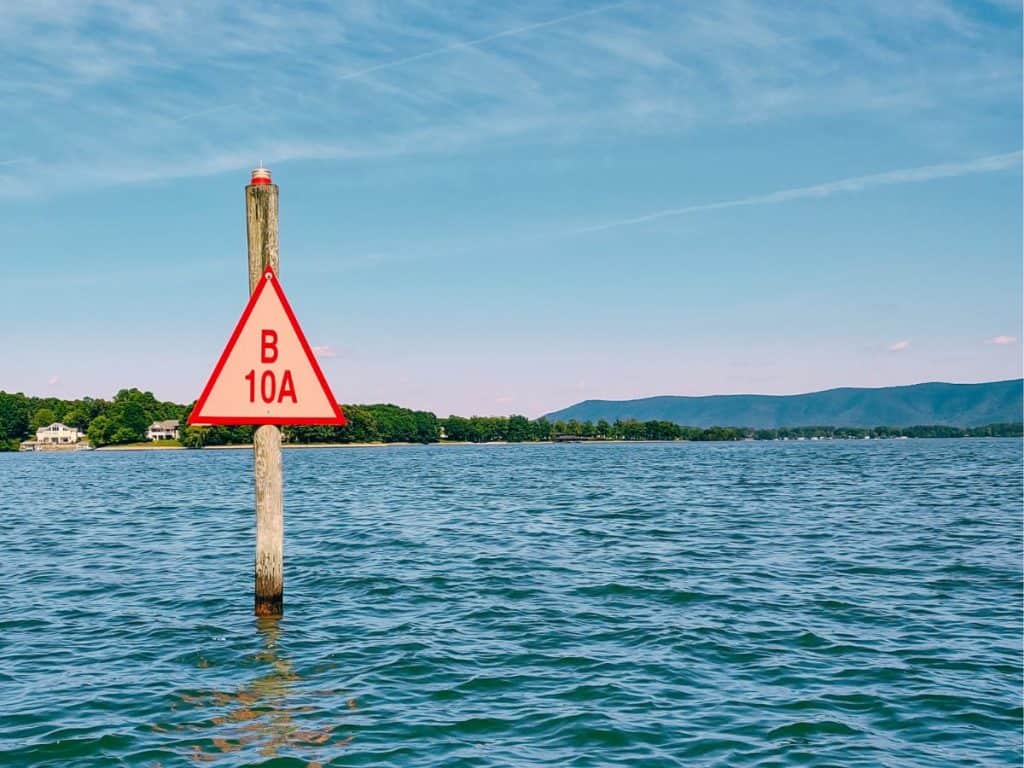
The numbered and lighted channel markers are mounted on pilings along these waterways. When traveling upriver (away from the dam), keep the triangular, even-numbered RED markers to your vessel’s RIGHT (starboard). An easy mnemonic is “Red on Right Returning,” where “Returning” means traveling toward the river’s source and not back toward the dock, ramp or marina where you started. These markers flash red lights at night or during heavy fog and other low-visibility conditions.
In contrast, square odd-numbered GREEN or BLACK ON GREEN markers should be kept to your LEFT (port) side when heading up-river. These markers have flashing green lights after sunset or in low visibility.
Heading downriver (toward the dam), you simply reverse the process. Keep RED markers to your LEFT and GREEN to your RIGHT.
Marker #1 for each channel is closest to the dam, with numbers increasing sequentially as you move upstream. Note that on the Blackwater River, B25, B23 and B21A are actually found a bit upriver from B26, B24 and B22 respectively. Additionally, some locations may skip numbers: for instance, there’s no R10 between R12 and R8.
New: Channel Junction & Lateral Markers
To improve safety and align with U.S. Coast Guard regulations, new Preferred Channel Markers have been installed at three channel junctions. The top color on these markers indicates which side to pass to stay on the main channel. Lights will match the top color and flash in a 2-pause-1 pattern.
Louse Creek/Roanoke River (behind Vista Pointe)
A green-over-red marker labeled LO has been added. To stay on the main Roanoke channel (upstream), leave it to your left. Heading into Louse Creek (Hardy Ford direction), leave it to your right.
Lynville Creek/Roanoke River
Near the mouth of Lynville (between R61 and R63), the new LC marker (green-over-red) guides boaters: leave it left to stay on Roanoke; right to enter Lynville.
Gills Creek/Blackwater River
Marker G1 is now a red-over-green triangle labeled BG. Stay on Blackwater by keeping it on your right; enter Gills Creek by passing it on your left. A new G2 warns of shoals; the former G2 is now G2A.
Additional updates
- White-flashing #1 markers at creek mouths (e.g., Bull Run, Craddock) are removed; green #1 markers with green flashing lights remain.
- Some white shoal markers are being replaced with lateral markers.
New markers
B5, B7 – Blackwater River
C2A, C2B formerly C2 – Craddock Creek
L2, L3 – Louse Creek
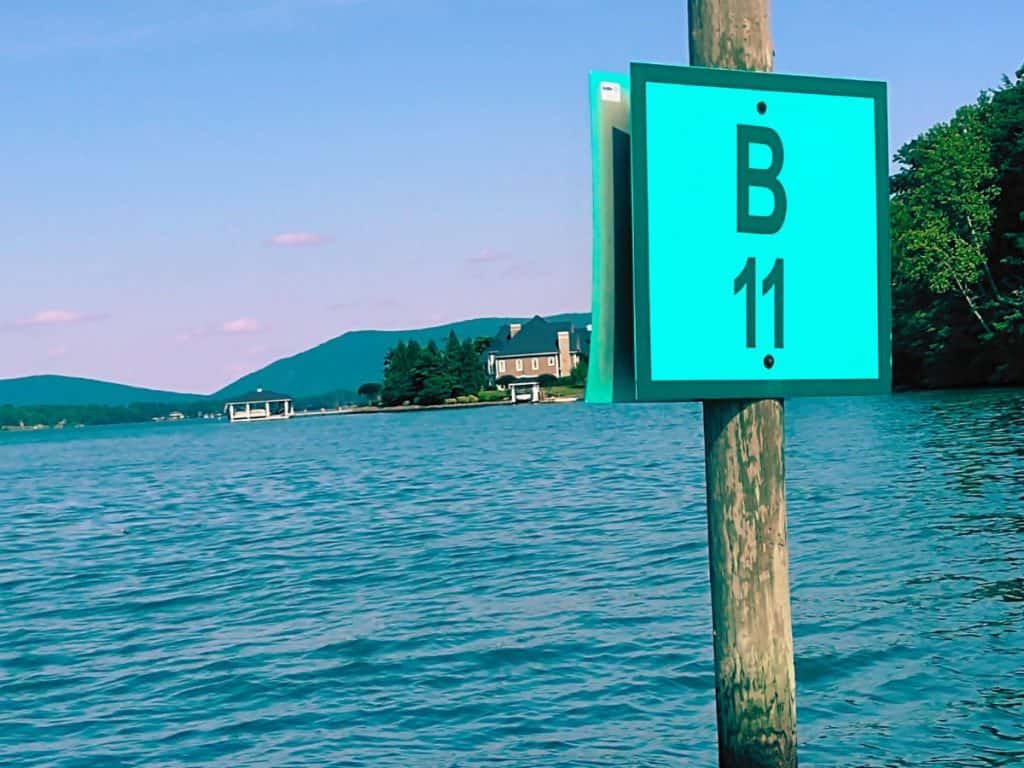
What Are the Channel Markers on Smith Mountain Lake?
Markers on Smith Mountain Lake are placed for optimal visibility rather than to indicate distance—thus they are NOT “mile markers.” For example, B2, B4 and B6 encircle a point at the first bend of the Blackwater River and are only about 150 yards apart. (Note that on Leesville Lake, markers are indeed placed at one-mile intervals).
It’s essential to give all markers a wide berth as lights can sometimes fail, and buoys may be displaced by wind or collisions. Always use a chart in conjunction with what you observe on the water.
Markers also include letters before or after their numbers to denote the channel or creek they mark:
R – Roanoke River
B – Blackwater River
W – Witcher Creek
WC – Walton Creek
C – Craddock Creek
H – Hatcher Creek
BU – Bull Run
BR – Little Bull Run
LO – Louse Creek
LC – Lynville Creek
BE – Beaverdam Creek
G – Gills Creek

Report missing markers, light outages or other safety issues to TLAC at (540) 721-4400 or [email protected].
Long-time SML boaters may recall the challenges of navigating the lake back when markers were sparse. Over the years, more than 200 authorized navigational aids have been added. Appalachian Power Company maintains these markers on main channels and creeks, while the Tri-County Lake Administrative Commission (TLAC) oversees shoal, and obstruction and no-wake buoys elsewhere.

Use Extra Caution at Night
Despite a robust marking system, boaters must stay alert to avoid disorientation—especially after dark. Meandering shorelines and obstructed lines of sight can make navigation tricky, even in familiar areas.
An onboard GPS app is an invaluable tool, particularly for newcomers. While standard smartphone maps usually don’t display navigational markers or hazards, specialized boating apps offer helpful features such as a compass, GPS coordinates, weather updates and more. Examples include Navionics, iNavX and Garmin ActiveCaptain.
Remember, navigational markers have red or green flashing lights at night, corresponding to their colors, and white flashing lights mark some shoals. Additionally, white cylindrical buoys designate swimming areas, shoals and no-wake zones. It’s crucial to stay away from shoal markers and avoid cutting between a navigational marker and the shore.
What is the Speed Limit on Smith Mountain Lake?
Smith Mountain Lake has no set speed limit for boats, however, safety comes first. Boaters are expected to use common sense, slow down in traffic or blind curves, and always throttle back if unsure.
SML Map with Channel Markers
For a successful boating experience, purchase and study a waterproof map of Smith Mountain Lake, available through the Smith Mountain Lake Association. Proceeds directly support the organization’s programs that help keep SML safe and clean.

Jerry Hale
STAFF WRITER
When he’s not writing about the Smith Mountain Lake, you might just find Jerry out wake surfing or just idling through its coves, practicing guitar or banjo on his deck at the Cottages of Contentment Island, playing steel drums or volunteering with LCM, Trinity Ecumenical Parish, Neighbors Helping Neighbors or the SML Charity Home Tour.
